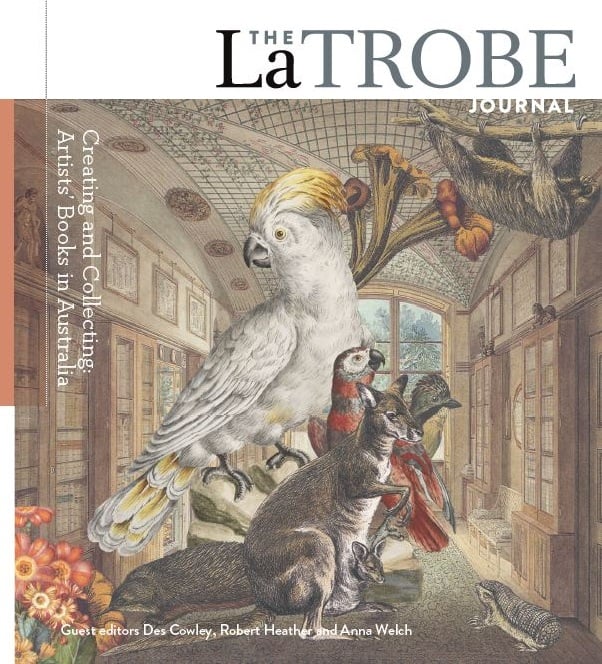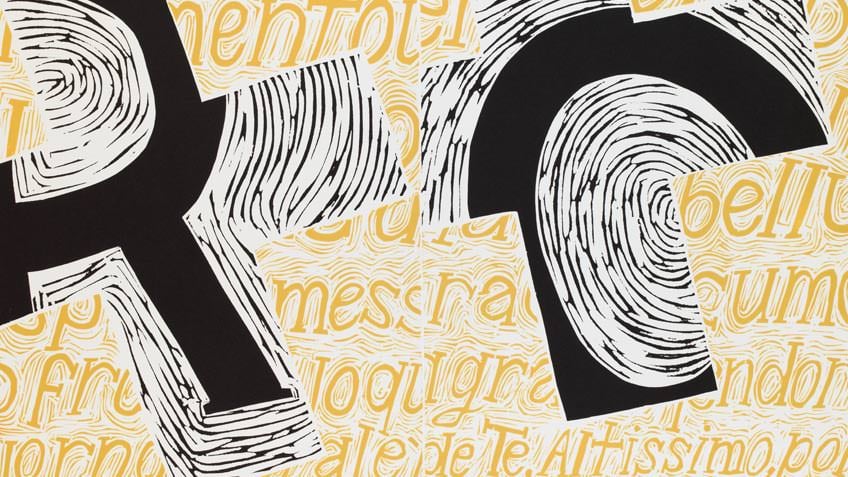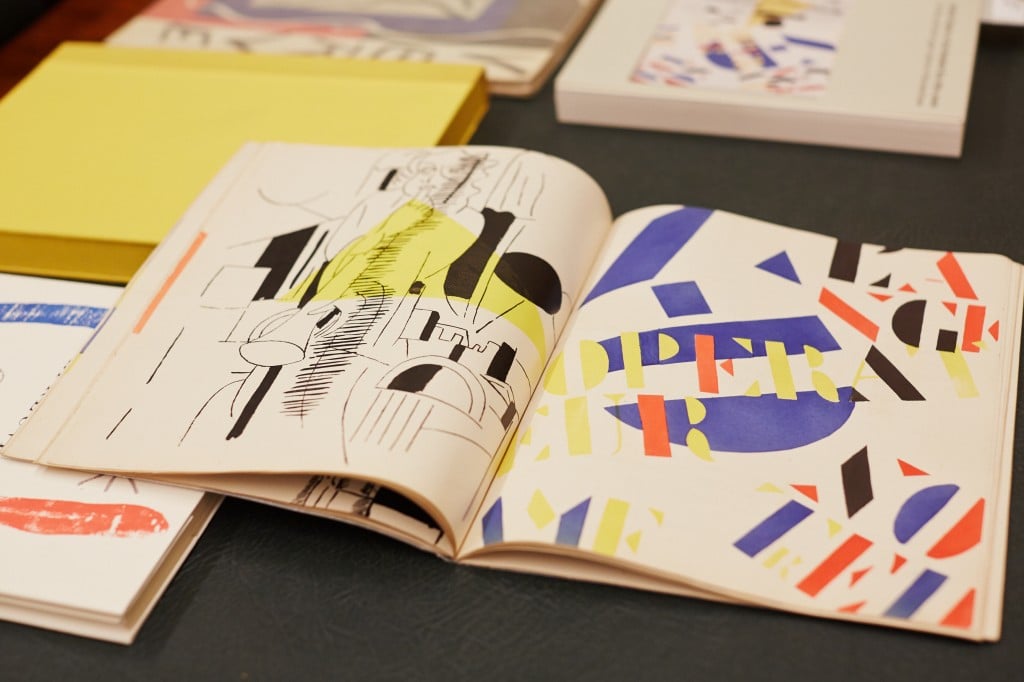
Front cover art of La Trobe Journal, Gracia Haby and Louise Jennison, Underneath Soane’s ‘star-fish’ ceiling, the library at No. 12 proved anything but quiet, 2015
The following is an excerpt from the latest La Trobe Journal ‘Creating and Collecting: Artists’ Books in Australia’, written by guest editors Des Cowley, Robert Heather and Anna Welch.
While there is no agreed definition of what an artist book is, it is generally defined as a book made by an artist and intended as a work of art. Within this broad definition, artists have embraced a variety of practices, from traditional print techniques – woodcut, etching and lithography – through to offset, photocopy or digital production. An artist book, whether unique or multiple, may assume the form of a codex, an altered book, a sculpture, or something else entirely. This diversity of form – which often poses the question ‘what is a book?’ – has made the field an exciting one for artists and researchers alike.
Author and book artist Johanna Drucker categorises artists’ books as ‘the quintessential 20th century art form’. Its immediate precursors were the private press books produced in the late-19th century by the Kelmscott Press, the Eragny Press, the Doves Press and others; the livre d’artiste productions engineered by entrepreneurial publishers such as Ambroise Vollard, Daniel-Henry Kahnweiler and Albert Skira; and the typographic and experimental publications associated with avant-garde movements such as Dada, Futurism, Surrealism and Constructivism.
The rise of Conceptualism in the 1960s saw artists increasingly turning to books as a medium in which to investigate their art practice. Ed Ruscha, Dieter Roth, Marcel Broodthaers, Ian Hamilton Finlay and others began creating inexpensive ‘multiples’ as a means of democratising their art outside the confines of gallery walls; in doing so, they paved the way for the modern artist book to be recognised as a distinct genre within contemporary art and publishing.
While throughout the 20th century a number of private presses, modelled on the work of William Morris and others, operated in Australia, it is nevertheless the case that, prior to the late 1960s, few Australian artists were involved with making books. There were some notable exceptions, including: Violet Teague and Geraldine Rede’s Night Fall in the Ti-tree (1905), Christian Waller’s The great breath (1932), Noel Counihan’s War or peace (c1950) and Robert Rooney’s Skipping rhymes (1956). It was, however, the decidedly internationalist stance of a new generation of artists in the 1960s and 1970s – Robert Jacks, Tim Johnson, Micky Allan, Alex Selenitsch, Ian Burn and others – that gave rise to the first great wave of artist book production in this country, documented in Gary Catalano’s important early survey The bandaged image: a study of Australian artists’ books (1983).
The State Library’s artists’ books collection includes more than 1000 items made by both Australian and international artists, with a special emphasis on books created by Victorians.
Our current exhibition Inspiration by Design features artists’ books by Pablo Picasso, Joan Miró, Georges Roualt, Pierre Bonnard, Max Ernst and Henri Matisse from the Victoria and Albert Museum’s stunning collection. The La Trobe Journal is available in the State Library’s Readings Bookshop, or become a Friend of the Library and receive a free subscription as part of your membership.



